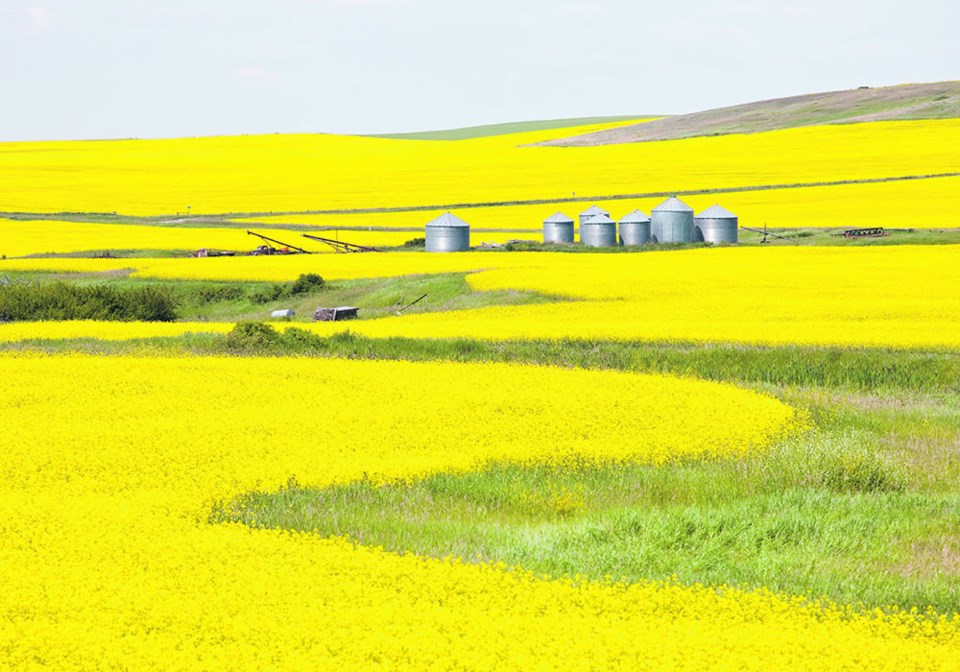WESTERN PRODUCER — Farm Credit Canada forecasts an increase in farm cash receipts for 2022 and 2023, an infusion that should help offset rising input costs.
FCC predicts national farm cash receipts for 2022 will be buoyed by a 14 percent bump, followed by a less robust but positive 4.6 percent increase in 2023.
FCC expects farm cash receipts to hit nearly $95.5 billion in 2022 and $98.8 billion in 2023.
Those figures are up from Statistics Canada’s 2021 report of $83.1 billion and represent a significant increase from 2018’s $62.6 billion.
The overall year-over-year higher receipts are also forecast to be spread across the country with Alberta, Ontario and the Atlantic provinces seeing the highest gains in 2022 with Saskatchewan, Manitoba and British Columbia doing likewise in 2023.
When it comes to grains and oilseeds, FCC chief economist J.P. Gervais said the forecast is for prices to remain above the five-year average.
The 2022 estimates for crops take into account the hangover from the 2021 drought.
“It was dragged down a bit by the poor ’21 crop so we didn’t have as high of volume to market and sell,” said Gervais. “Given what we know about the ’22 crop, given some assumptions of average production or average yields in ’23, that generates prices remaining above the five-year average.”
Dry peas, soybeans, corn and wheat are all expected to see increases in farm receipts of between 20 and 30 percent for 2022 with canola rising by nearly 13 percent. The one decline in 2022 is expected to be durum, which is forecast to rebound in 2023.
FCC’s forecast issued in January 2022 for crop cash receipts last year were off by more than 12 percent with grains, oilseeds and pulses generating $4.8 million more.
Gervais said world events played a significant part in that conservative estimate which came before Russia’s invasion of Ukraine.
“It accounted for the poor 2021 crop — we knew the volume was down and hopefully we would get a good year in 2022. And we did, for the most part. But we never accounted for the extent of the increase in prices that we saw in the first six months with the war in Ukraine,” he said.
The unpredictability of world events is always a complicating factor in forecasts along with weather and with above-average crop prices, there is only so far they can go.
“There is more downside risk than upside risk,” said Gervais, adding the current forecast is somewhat aggressive. “Whether it’s a global economic slowdown and who knows what’s going to happen with the war — I do think there is a higher risk of numbers coming in lower next year than higher.”
That’s something to consider for profitability because input costs will probably remain elevated over the next year regardless of crop prices.
Livestock, however, is a different story as inventory levels across the continent shrink while demand continues to be strong.
Cattle receipts saw a more than 15 percent increase in 2022 with FCC forecasting another 3.4 percent increase in 2023 that will see real dollar values rise to more than $11 billion.
Gervais said looking at the first six weeks of the year, that might be a conservative estimate on the gains expected this year.
“If we were to run these numbers and models again, I suspect we’d see a little bit more optimistic forecast,” said Gervais. “The fundamentals for cow-calf operators are promising for sure.”
Hog prices continue to outperform expectations with 2022 seeing a more than eight percent increase in receipts, which is expected to rise again in 2023 by more than 7.5 percent, according to FCC.
Gervais anticipates the overall higher commodity prices will likely result in corresponding changes to land values with FCC’s report on the topic expected to be released in mid-March.




